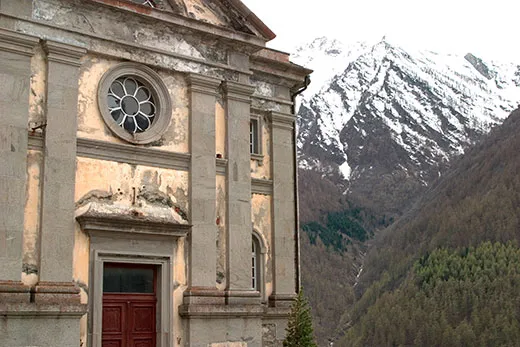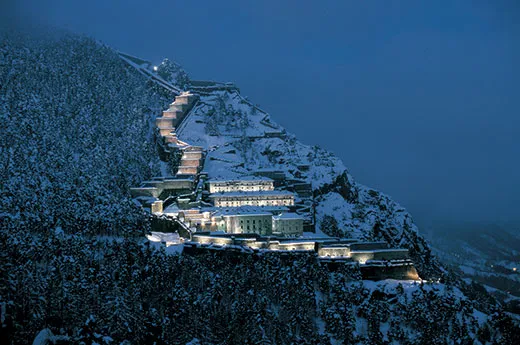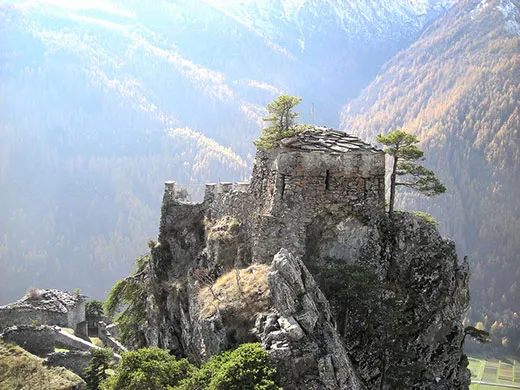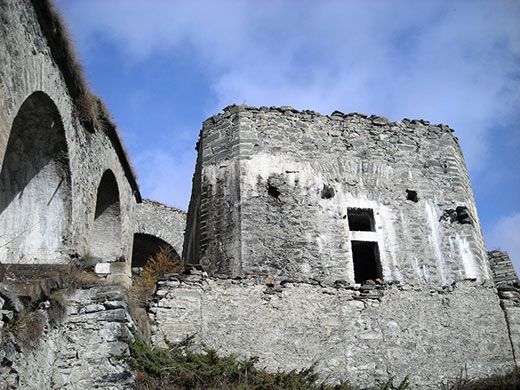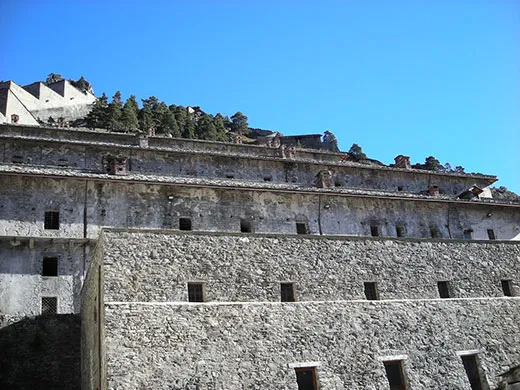Endangered Site: Fenestrelle Fortress, Italy
The “Great Wall of the Alps” covers 320 acres and is one of the largest fortified structures in Europe
/https://tf-cmsv2-smithsonianmag-media.s3.amazonaws.com/filer/Fenestrelle-Fortress-Italy-631.jpg)
Victor Amadeus II was a heavyweight duke, leader of the longest-surviving royal line in Europe, the House of Savoy (established 1003). But in his day—the late 17th and early 18th centuries—the Continent was aflame with wars of nation-building, and it was his fate to rule a duchy caught in the crossfire between Louis XIV's France and the forces of England, Austria and other countries in a coalition of convenience known as the Grand Alliance. In both the Nine Years' War (1688-97) and the War of Spanish Succession (1701-14), Amadeus was very nearly dispossessed.
Yet the duke had a gift for self-preservation. In both wars he saved his seat by betraying his nominal allies (the Alliance in the first, the French in the second). By the time peace treaties were signed, he possessed an expanded domain, recognition among European powers as the King of Sardinia—and an appreciation of the idea that with great power comes great vulnerability. Thus his most enduring monument was defensive: the fortress of Fenestrelle, some 60 miles west of Turin on a ridge guarding the Chisone Valley, next to the modern-day skiing center of Sestriere in the Italian Alps.
Not for nothing is the fortress called the "Great Wall of the Alps." Covering 320 acres, it is one of the largest fortified structures in Europe: a collection of three major forts, plus supporting redoubts, ramparts, batteries, barracks, powder magazines, warehouses, kitchens, a governor's mansion, a parade ground and a church. The complex stretches almost two miles long, and it rises some 2,000 feet on its way to a peak that tops out at nearly 6,000 feet above sea level. Fenestrelle Fortress' most distinctive feature may be its 3,996-step stairway, which was roofed with stone to protect the troops from cannonballs and shield their movements from the enemy. A parallel open stairway of 2,500 steps—called the "royal" walk because Victor Amadeus' son and successor, King Charles Emmanuel III, was said to favor it—leads to the fortress' higher reaches on Mount Pinaia.
Construction began in 1728, two years before Victor Amadeus abdicated in favor of his son and four years before he died, at age 66. The work consisted mainly of cutting and reassembling the stone of the mountainside, and it continued until 1850. By then, the fortress was not only protecting the Chisone Valley, but also housing high-profile detainees: errant military officers, noblemen and clergy whose fortunes shifted with the political tides. "Fenestrelle is the Siberia of Italy," is how the 19th-century Catholic journal The Rambler summarized the experience of a cardinal who spent three and a half years in captivity there.
Siberia's chill winds, however, were reserved for inmates. Others could stroll in the alpine sunshine, taking in mountain views, which continue to charm. "It is impossible to visit the fortress without it having a profound effect on you, either from its historical perspective or just the sheer amount of labor that went into its construction," says Kent Benson, owner of a small company (ifhannibalhad.com) that organizes bicycle tours of the fortress. (A full tour, he says, takes eight hours—"You climb the equivalent height of two Eiffel Towers.")
The House of Savoy survived into the 20th century; Victor Amadeus' descendants ruled Italy as kings (even after Savoy was ceded to France in 1860) until the nation became a republic, in 1946. Decommissioned in 1947, the fortress succumbed to the ravages of time: pillaging of construction materials, erosion, water seepage and overgrowth.
Today, the fortress lies within the Orsiera Rocciavrè National Park. A local nonprofit group (to which Benson belongs) has been leading a conservation effort since 1990, and while it has brought the lower part of the fortress back to life, the magnitude of the complex and the relative remoteness of its upper parts present monumental financial and logistical challenges.
Restoration work on the lowest (and most accessible) fort, San Carlo, is about 80 percent complete, and cultural events are held there in summer. This past fall, an international architectural competition organized by the Province of Turin produced a plan to improve access to the site. But while the two upper forts, Tre Denti and Delle Valli, have been cleared of overgrowth, they remain exposed to the elements. Visitors may explore all three, taking either the covered staircase or following in Charles Emmanuel's footsteps on the royal walk, where they can contemplate the majesty—and hazards—of political power.
Planning Your Next Trip?
Explore great travel deals
Smithsonian magazine participates in affiliate link advertising programs. If you purchase an item through these links, we receive a commission.
